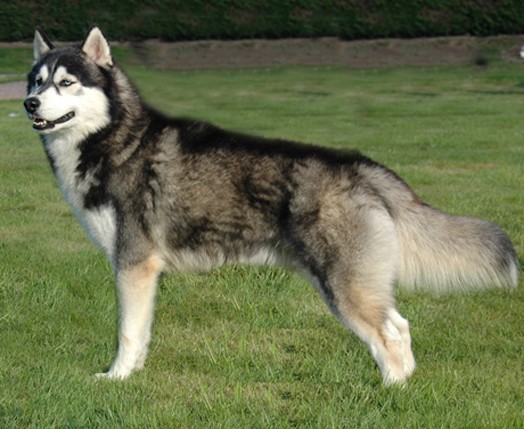The Siberian Husky
The Siberian Husky combines power, speed, and endurance. This breed is moderately compact, slightly longer than they are high, and of definite Northern heritage. They are fast and light on their feet, with a smooth and uncomplicated stride showing both great reach and drive. They have a double coat of medium length, with a soft, dense undercoat and straight, rather flat-lying external coat. Their expression is often eager but friendly, interested, and in some cases even mischievous.
The Chukchi people of northeast Asia established the type now known as the Siberian Husky. Their origins is unidentified, however they are of obvious spitz origins, progressed over centuries as a sledge dog for these nomadic people. During the Alaskan gold rush, dogs became an important part of life in the Arctic regions.
In 1909 the very first Chukchi huskies were brought to North America from Siberia for The All-Alaska sweepstakes race. Smaller sized and more docile than the majority of the other competitors in the race, they aroused little affection. There was the exception of one racer who was so pleased he imported seventy to train for the 1910 race. Throughout the remainder of the year, the canines made their keep as practical sledders, but it remained in 1925 that they acquired their greatest acclaim. Groups of Huskies raced 340 miles with life-saving serum for diphtheria stricken Nome, AK and were credited with conserving the town. A statue in their honor stands in Central Park.
The breed’s appeal continued to grow and now this breed is cherished family pet. They remain one of the most popular of the Arctic breeds.
Personality
Fun-loving, daring, alert, independent, creative, stubborn, mischievous, and obstinate all describe the Siberian Husky. If provided the chance, this breed loves to run and will roam. They may be extremely assertive toward strange canines, but they are usually great with other dogs in the house. In fact, they are really social and should have lots of human or canine companionship. They might chase after small animals or unusual cats. Some are most likely to groan, dig, and chew.
Upkeep
This is a very active dog. Their coat requires brushing one or 2 times a week, daily during periods of heaviest shedding.
Health
Significant concerns: none
Small concerns: PRA, cataract, corneal dystrophy, hypothyroidism
Sometimes seen: CHD
Recommended tests: eye, (thyroid), hip
Life span: 11– 13 years
Disclaimer
Note: While the qualities mentioned here might regularly represent this breed, animals are like people whose appearances and characters will differ. Please consult the adoption company for information on a specific family pet.
They have a double coat of medium length, with a soft, dense undercoat and straight, somewhat flat-lying outer coat. The Chukchi individuals of northeast Asia developed the type now understood as the Siberian Husky. The breed’s popularity continued to grow and now this type is treasured family pet. They therefore stay one of the most popular of the Arctic breeds.
They may be really assertive towards odd pet dogs, however they are generally good with other canines in the house.
Advertisement
Siberian Huskies for Dummies on Amazon.com


